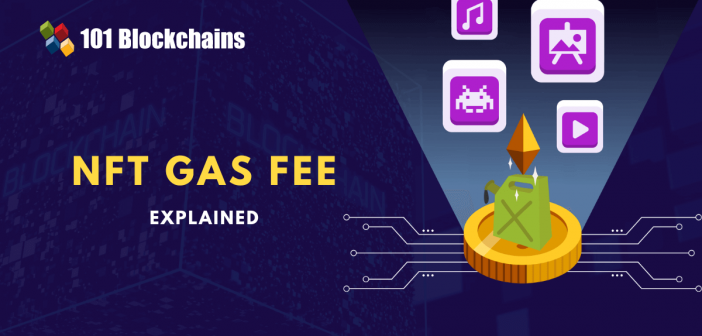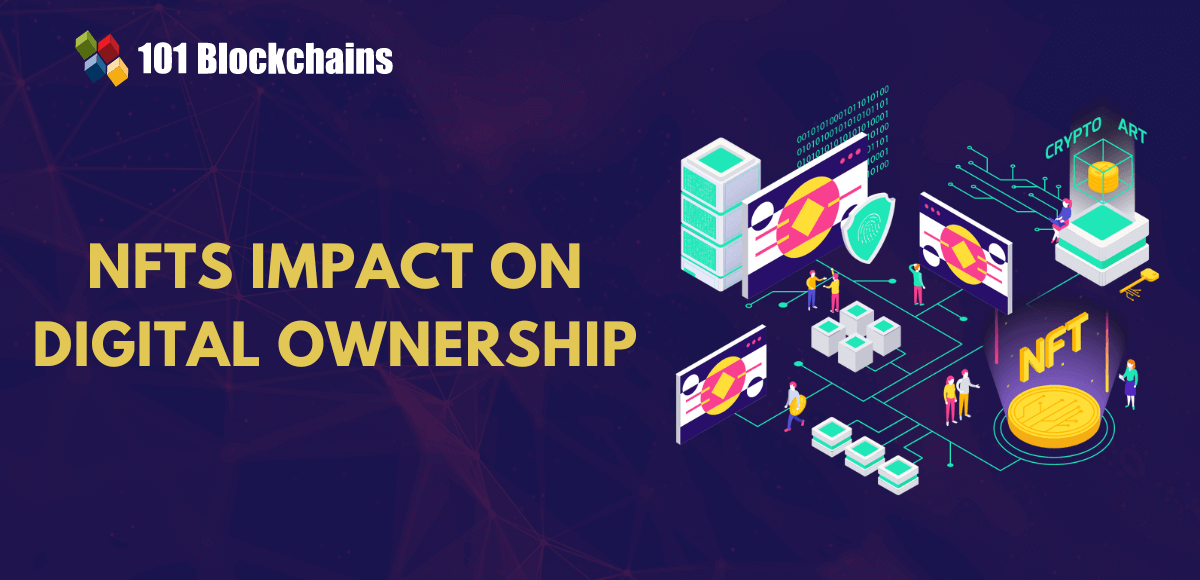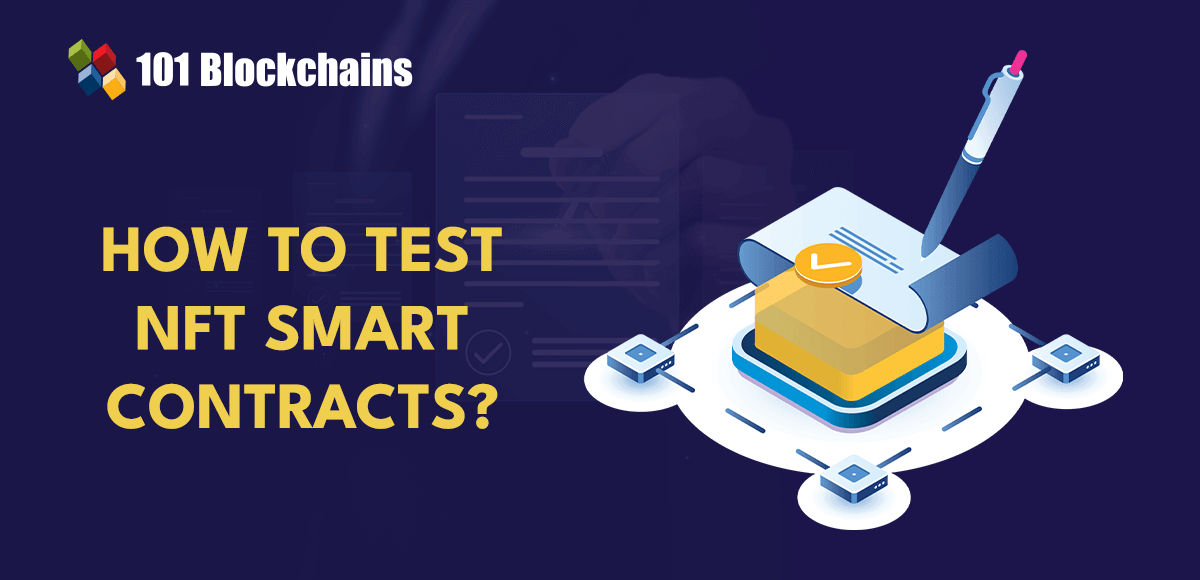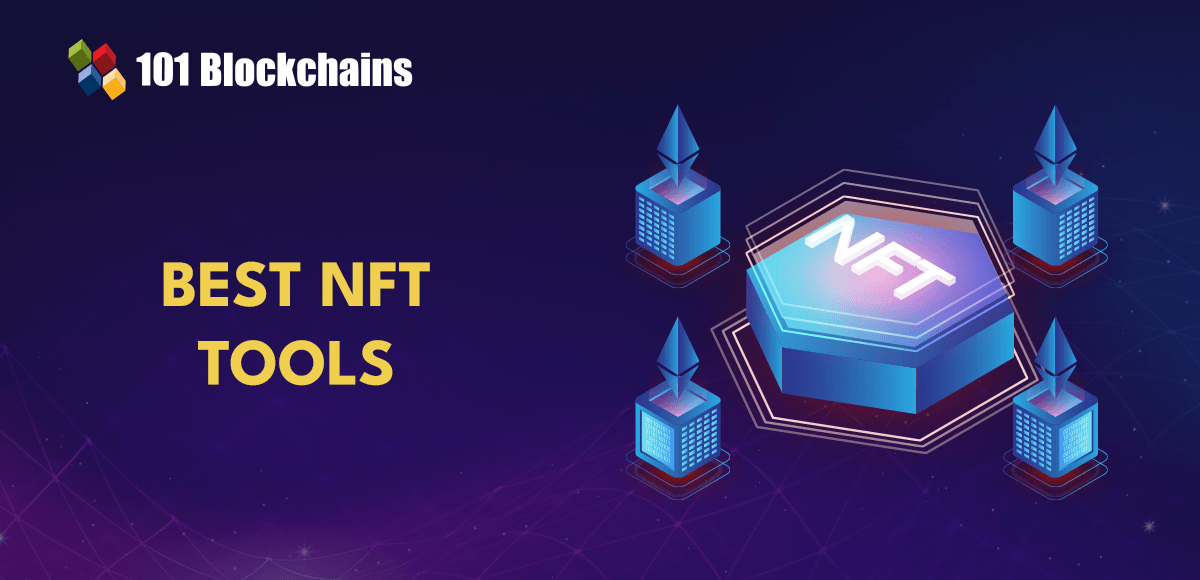Learn how blockchain truly works, master key definitions, and uncover what makes smart contracts so "smart." Dive into the fundamentals, gain valuable insights, and start your blockchain journey today!

- NFT
James Howell
- on February 14, 2023
What Is NFT Gas Fee & How to Calculate It?
The sporadic growth in interest in non-fungible tokens has been one of the noticeable phenomena in the tech landscape. After the sale of digital artwork in the form of an NFT for $69 million, many artists followed suit and achieved significant success. However, the interest in creating NFTs must also focus on Non-fungible tokens gas fees explained clearly for beginners to ensure the best results.
Creators and artists have discovered the immense potential for monetizing their works with blockchain technology. The NFT market has expanded by significant margins in a comparatively smaller duration of time. On the other hand, an association of NFTs with blockchain invokes the necessity of discussing gas fees. The following post offers a detailed explanation of the significance of NFT gas fees and methods for calculating gas fees.
What are Gas Fees?
The introduction to gas fees Non-fungible tokens estimates must emphasize the definition of gas fees. It is the charge paid by users for transactions on the Ethereum blockchain. The gas serves an integral role in facilitating compensation to miners for the computing resources and effort required for validating transactions and including them in the blockchain.
You can think of gas fees as the amount of computational power needed for recording transactions on the Ethereum blockchain. The most common denomination for gas fees is gwei, which denotes minute fractions of Ether or ETH. One gwei is equal to one billionth of Ether, which is equal to 1 nanoether.
The necessity of learning about foundation NFT gas fees is visible in the continuous fluctuation in gas fees. Based on the network traffic and complexity of transactions, gas fees could differ significantly for various NFT transactions. It is obvious that transactions that need additional computing resources would demand more fees. At the same time, NFT transactions during peak periods of network traffic on the Ethereum blockchain would invoke higher gas fees.
Learn comprehensively about the working of Ethereum by enrolling in the Ethereum Technology Course.
How Do Gas Fees Matter for NFTs?
The most important question on your mind right now must be, “what is Non-fungible tokens gas fee” the answers could help you understand the significance of gas fees in NFTs. First of all, you must note that every blockchain transaction, including minting, purchasing, transferring, or trading NFTs, requires gas fees. The gas fees are payments for validators to ensure the security of the blockchain network. Gas fees help in rewarding users staking their ETH for becoming validators and processing transactions on the blockchain.
The definition of average NFT gas fee estimates points out the references to NFT gas fees in the case of the Ethereum blockchain. As of now, the Ethereum blockchain presents the most expensive gas fee estimates ranging between $5 and over $500. Ethereum leverages the Proof of Stake consensus, where validators have to stake their ETH on the blockchain in smart contracts. In return, the validators would receive the opportunity to validate transactions and ensure security of the network. Therefore, the gas fees for Non-fungible tokens collections serve as payment for ensuring that you host NFTs and related transactions on secure blockchains.
Want to get an in-depth understanding of non-fungible tokens (NFTs)? Enroll now in the NFT Fundamentals Course.
Implications of NFT Gas Fee for Artists
The search for cheapest Non-fungible tokens gas fees is an expected phenomenon for every NFT creator. Artists and creators have to deal with expensive gas fees for NFT transactions on the Ethereum blockchain. At the same time, NFT creators could not skip the gas fees as it is an important requirement for creating, buying and selling NFTs.
The implications of Non-fungible tokens gas fees for artists are significantly influential in determining the course of action for NFT creators. It is important to note that all NFTs do not sell for millions of dollars. Some of the NFTs could fetch only a few hundred dollars, while many of them can remain unsold. Since artists have to pay gas fees for creating and selling their NFT, they could end up with losses rather than profits.
The uncertainty of gas fees NFT collections might require also points to another critical implication for artists. It is impossible to obtain an accurate prediction of gas fees required for NFTs owing to frequent changes in gas prices. Higher gas prices suggest that artists would have to struggle in creating and distributing NFT collections with assurance of profits.
Some artists could try reducing the overall price of their NFTs to facilitate compensation for gas costs during periods of spikes in gas prices. On the other hand, buyers could perceive that low-priced NFTs have limited value. While gas fees are completely unrelated to the actual value of NFTs, they can exceed the total cost of the NFTs in some cases. Therefore, new artists and NFT developers would encounter significant difficulties with their projects due to higher gas fees.
Start learning Non-Fungible Token with World’s first NFT Skill Path with quality resources tailored by industry experts Now!
Use of Gas for NFT Minting
The implications of gas fees for new NFT developers and artists showcase how it is important to figure out gas fees. A detailed account of Non-fungible token gas fees explained for beginners would also emphasize the use of gas fees in minting. The procedure of minting NFTs involves the conversion of specific files into digital assets represented on the blockchain. Minting NFTs is similar to other transactions on the Ethereum blockchain and would require resource-intensive computation efforts on behalf of miners. The gas fees help compensate miners or validators for effective documentation of NFT minting transactions on the blockchain.
Artists can explore a relatively easy process for minting NFTs, just like uploading a YouTube video. However, the minting transaction will start only after the creator pays the approved gas fees. The fact that gas fees do not have any direct relation to the absolute value of the NFT, sellers, as well as buyers, could lose money in NFT transactions.
How? The gas fees could cause the costs to exceed the amount you receive or pay for the concerned non-fungible token. The importance of foundation Non-fungible tokens gas fees is visible in their benefits for safeguarding the blockchain network. Gas fees are essential for the continuous operations of a blockchain through incentives for miners and validators who verify and add transactions to blockchain networks.
Miners or validators receive incentives in gas fees for their work in securing the blockchain network. As a result, more gas fees in NFT minting could help in expanding the resources available for validating NFT transactions. In addition, higher incentives also ensure the optimization of transaction speed with more resources dedicated to validation.
Build your identity as a certified blockchain expert with 101 Blockchains’ Blockchain Certifications designed to provide enhanced career prospects.
Costs for Minting NFTs
The concerns regarding gas fees for non-fungible token minting and transactions on blockchain networks also draw attention to methods for calculating gas fees. You can find answers for “how to calculate NFT gas fee” by referring to the formula for the calculation of total transaction fees.
The total transaction fee is a product of gas limit and gas price. When the gas limit is equal to the total transaction fees, the NFT transaction would pass through and update the entire blockchain. In the event of transaction fees exceeding the gas limit, the transaction does not pass through. The gas fees can be significantly high in the case of large contracts.
The formula for calculating gas fees would use the supply and demand implications pertaining to the miners and validators. In the case of Ethereum, the following formula can help in calculation of gas fees.
Ethereum gas fees = Gas units or gas limit * (Base fee + Tip)
In the event of high demand for transactions, the validators would have to complete complicated algorithms. Therefore, complex NFT transactions would demand more effort and energy consumption, which ultimately increases the gas fee. You can search an NFT gas fee calculator and use the specific parameters at the time to obtain accurate gas fee estimates. Apart from the gas fees, you must also take note of the other costs for minting NFTs. The account fee is a charge imposed by the NFT marketplace you want to use. On the other hand, you must also pay listing fees as payment for the sales listing of concerned NFT.
Excited to develop an in-depth understanding of solidity’s best practices and the tools needed for developing and testing an NFT marketplace, Enroll now in the NFT Development Course
Gas Fees on Different Blockchain Networks
The average NFT gas fee estimate is probably one of the difficult entities you have to struggle to find out. Gas fees vary distinctively from one blockchain to another, alongside possibilities for price differences in transactions on a specific blockchain. Therefore, the cost of minting NFTs could vary between $1 and more than $500. At the same time, NFT developers can also choose different NFT marketplaces for optimizing the overall minting cost.
-
Gas Fees on Ethereum
The foremost blockchain network preferred for NFT development is Ethereum. As a result, it has become one of the most expensive blockchain networks. How? The growing number of users and limited capacity of the network has resulted in climbing costs of gas fees NFT collections demand on Ethereum.
The gas fees on Ethereum blockchain include a base fee as well as a tip. While the Ethereum blockchain burns the base fee, it rewards the tip to validators. In addition, the NFT minting gas fees could vary by significant margins owing to network demand and existing price of ETH. As a matter of fact, the costs for NFT minting have reached around $500 for each transaction.
Want to learn the basic and advanced concepts of Ethereum? Enroll in our Ethereum Development Fundamentals Course right away!
-
Gas Fees on Solana
Ethereum is obviously the popular blockchain platform for NFT development. However, the quest for the cheapest NFT gas fees could lead you to alternatives such as Solana. Other blockchain networks, such as Polygon and Solana, also offer exclusive functionalities for minting and storing NFTs. The explosive growth in popularity of Solana has pointed out the possibilities for challenging the dominance of Ethereum on NFT development.
As a matter of fact, Solana is the second-largest blockchain network in terms of transaction volume after Ethereum. The striking aspect of gas fee estimates for NFT minting on Solana refers to the freedom from uncertain rises in fees due to network congestion. In addition, the simple approach for NFT minting on Solana with three blockchain transactions offers the effective assurance of lower gas fees.
Importance of the Gas Fee Limit
Another crucial aspect in discussions about ‘how to calculate Non-fungible tokens gas fee’ would draw the limelight towards gas fee limit. The gas fee limit or gas limit points to the maximum amount of gas you want to spend for a specific transaction. A higher gas limit points out that your transaction would have priority over other transactions with lower gas limits. The flexibility for setting a gas fee limit can help in ensuring that you can exercise a certain level of control over the transaction costs.
Excited to develop a comprehensive understanding of Polygon? Enroll now int the Polygon Fundamentals Course Now!
Best Practices for Reducing Gas Fees
The difficulty in finding a reliable NFT gas fee calculator emphasizes the necessity of adopting best practices for reducing gas costs. You can avoid the burden of high Non-fungible tokens gas fees with the help of following methods.
-
Look for Low Network Demand
NFT developers could look for instances when the network demand is low. Transactions in the early hours of the morning or late hours at night could ensure that you face low network demand.
-
Setting a Gas Limit
The gas limit could help in accessing the cheapest Non-fungible tokens gas fees by choosing the number of fees for NFT transactions. Interestingly, you can also modify the gas limit when you want to complete the transaction.
-
Use Layer 2 Solutions
The feasibility of NFT development on Ethereum is growing complicated every day with the rise in its popularity. Layer 2 solutions can offer off-chain transaction processing like the layer 1 mainnets, such as Ethereum blockchain, at lower costs. Some of the alternatives among layer 2 solutions for lower gas fees would include Solana or Cardano.
Learn the concept, elements, future and use cases of NFTs from Non Fungible Tokens (NFTS) E-Book
Final Words
The importance of gas fees for non-fungible tokens is clearly evident in the role of gas fees in blockchain networks. Gas fees help in providing incentives to miners and validators for verifying and adding transactions to a blockchain network. Apart from foundation Non-fungible tokens gas fees, you must also notify the implications of account fees and listing fees for creating and selling non-fungible tokens.
The discussion also reflected on how the gas fees for NFTs could vary from one blockchain to another. Most important of all, you can follow best practices for alleviating the burden of higher gas fees for NFT transactions. Learn more about gas fees and NFT development in detail with professional training courses now.
*Disclaimer: The article should not be taken as, and is not intended to provide any investment advice. Claims made in this article do not constitute investment advice and should not be taken as such. 101 Blockchains shall not be responsible for any loss sustained by any person who relies on this article. Do your own research!






